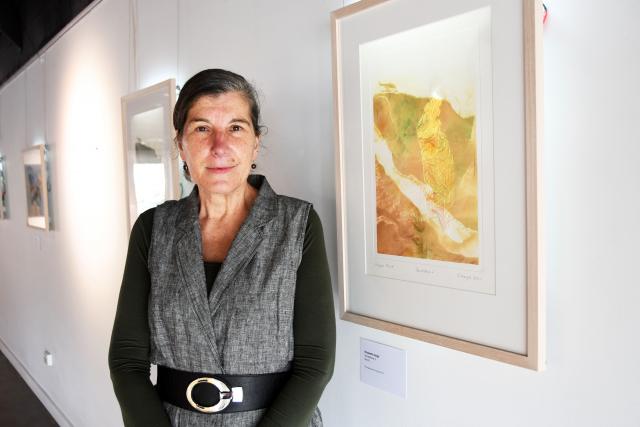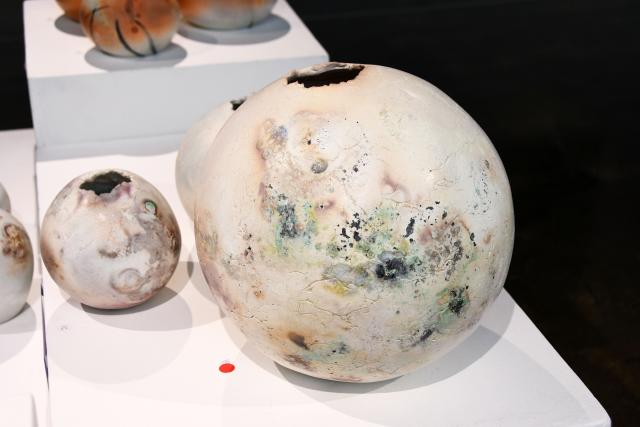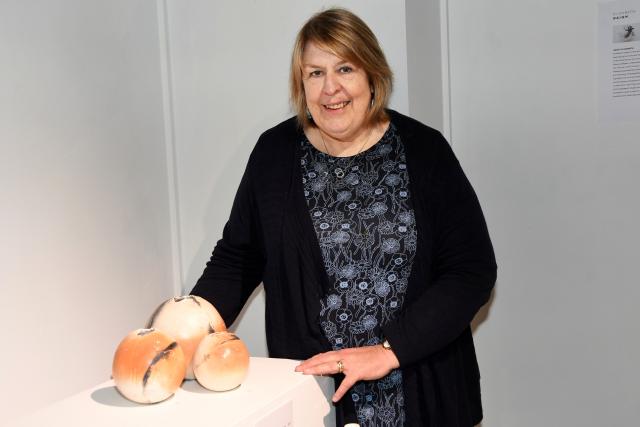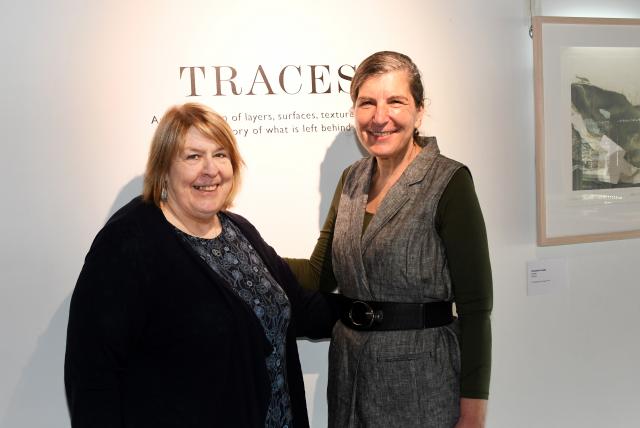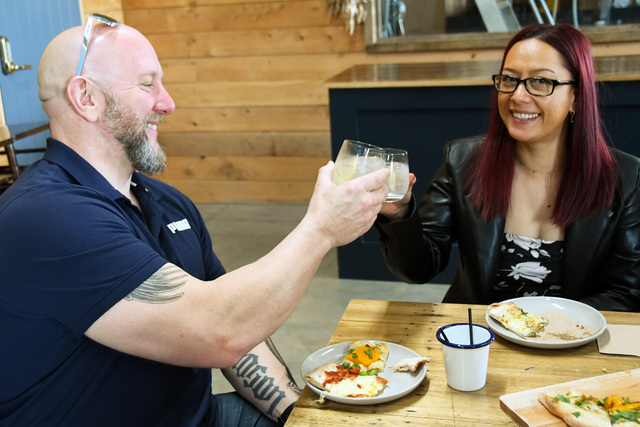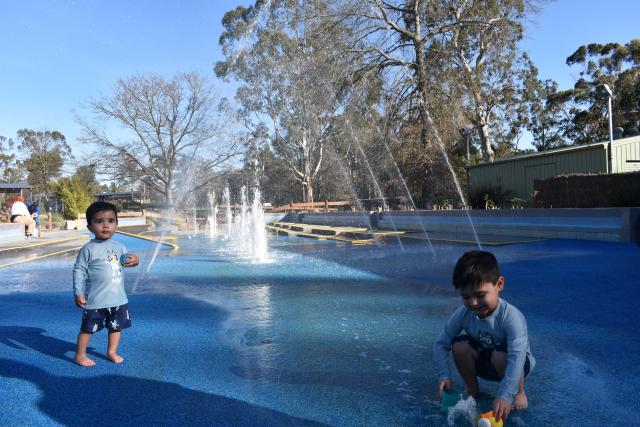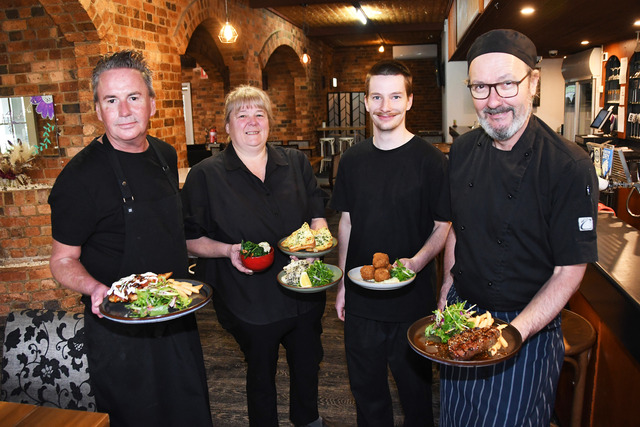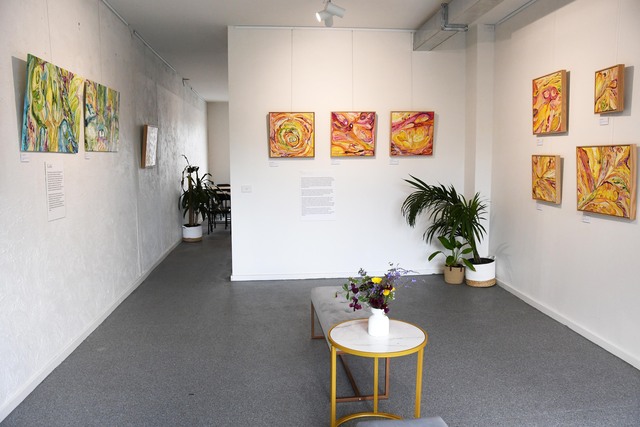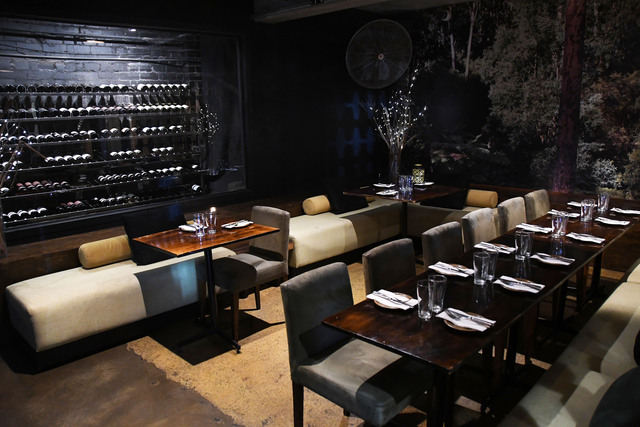Three local artists who contrast but complement each other are exploring traces of time, place and landscape in YAVA’s latest Healesville exhibit.
Elizabeth Haigh, Jerry Osadczuk and Laura Windmill have united for the exhibit which features works exploring layers, surfaces and textures, described as a ‘memory of what is left behind’.
All have been inspired by nature and the colours of the earth, and in differing ways the artists have used the environment to deliver their works.
Windmill’s ceramic works have been inspired by nature and the colours of the earth – through glaciers, volcanos, open red dirt plains. Each vessel takes you to a distant place like glaciers in Iceland or the Kimberley in Central Victoria.
The ceramist uses organic material in the firing to get colour and texture transferred on to the vessels, things such as banana peels, pine needles and rock salt.
“The chemical reaction with the heat causes all these beautiful patterns. Sometimes it works, sometimes it doesn’t, but I’m really, really lucky I can refire my work. It’s not usually all a loss if it’s not what I’m looking for but each piece is unique,” Windmill said.
And each time a different trace is left on the ceramic piece until it is complete.
Osadczuk describes himself as an alchemist also uses natural materials in the layers of his artworks with some pieces having red dirt gravel from the Pilbara region used in the paintwork. Osadczuk said his work starts out abstract but then quickly takes on the form of a landscape or even a surrealist work.
Haigh’s work with textiles have evolved printing and dying with botanicals and is inspired by geology and nature, as the artists works all unites together for the show.
“The idea of traces and the geological aspect and the textures and the layering – there was that common factor that melted us all together,” Haigh said.
Textiles was also a way for Haigh to explore traces of her family’s history in tailoring, with the garments then taking on different shapes and natural impressions for the artist’s eye.
“Along the way, the garments moved from the dressmaking mannequin on to the table as a sculptural form…. I started photographing, and because of my long term interest in the landscape and nature, what images appealed to me with these fabric pieces, was something that looked a little bit like a dune or rockcliffe for an escarpment something like that.”
The artists hope that viewers will see the show and be inspired by the art and how items can be transformed through traces of layers and texture into inspirations of nature and the environment.
“A lot of people just look at ceramics as being entirely functional like a bowl of cotton or whatever – I’d like them to walk away and say yes, it is an object of art,” Windmill said.
“Other people will have their own interpretations and see other things in that but initially, the aim was to shift textiles from its normal functional position and into an art form or fine art,” Haigh said.

